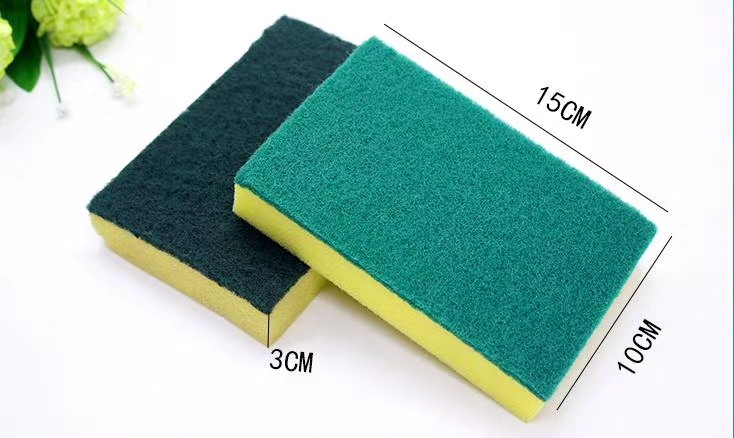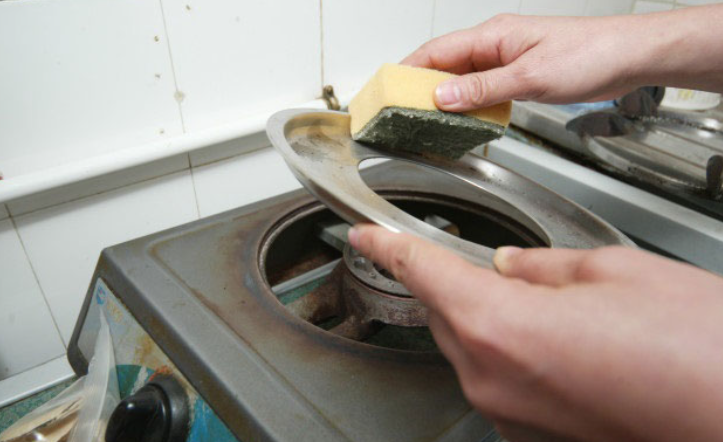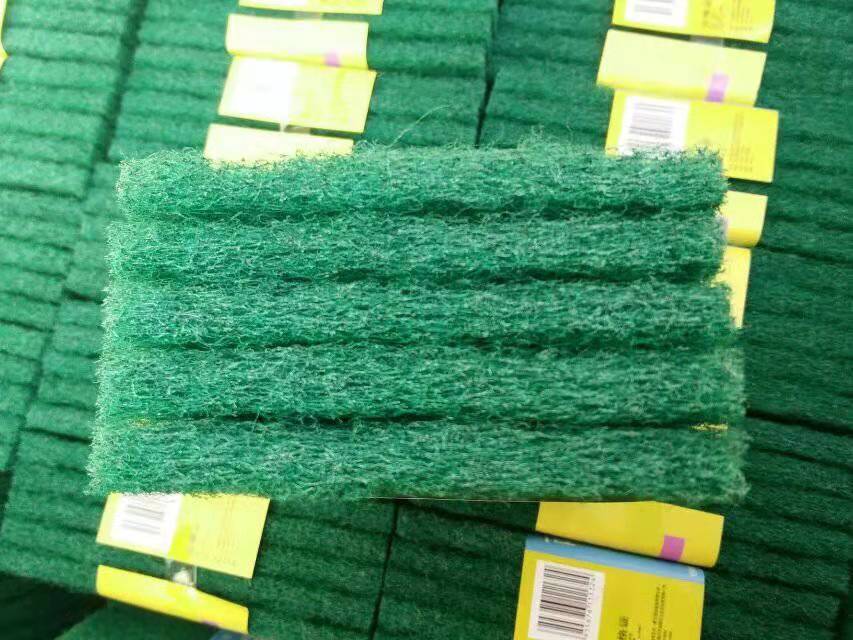The frequency of changing a scouring pad depends on several factors, including the quality of the pad, how often it is used, and the nature of the cleaning tasks it is used for. However, as a general guideline, it is recommended to replace a scouring pad every few weeks or when it starts to show signs of wear and tear.

The abrasive surface of a scouring pad can become worn down over time, reducing its effectiveness in removing tough stains and grime. Additionally, bacteria and food particles can get trapped in the pad, leading to potential hygiene issues. If you notice that the scouring pad has become frayed, torn, or discolored, it is a good indication that it needs to be replaced.
To prolong the lifespan of a scouring pad, it’s important to rinse it thoroughly after each use to remove any debris. You can also sanitize the pad periodically by soaking it in a mixture of hot water and disinfectant. However, even with proper care, scouring pads will eventually wear out and lose their effectiveness, so it’s best to replace them regularly to maintain optimal cleaning performance.
Are scouring pads reusable?
Yes, scouring pads are generally reusable. They are designed to be durable and withstand multiple uses. However, their lifespan and reusability depend on various factors, including the quality of the pad, the type of surface being cleaned, and the intensity of the cleaning tasks.
While scouring pads are reusable, it’s still recommended to replace them periodically. As they get used repeatedly, the abrasive surface can become worn down, making them less effective in tackling tough stains and grime. Additionally, over time, bacteria and food particles can accumulate in the pad, potentially compromising hygiene. If you notice significant wear, tear, or signs of deterioration in a scouring pad, it’s a good idea to replace it with a new one for better cleaning performance.

How do you clean a scouring pad?
Cleaning a scouring pad is relatively straightforward. Here’s a simple process you can follow:
- Rinse: After each use, thoroughly rinse the scouring pad under warm water to remove any loose debris or particles.
- Soak: Fill a sink or basin with warm water and add a small amount of dishwashing liquid or mild detergent. Submerge the scouring pad in the soapy water and let it soak for a few minutes. This helps to loosen any remaining residue and bacteria.
- Scrub: Take the scouring pad out of the soapy water and give it a gentle scrubbing with your fingers or a soft brush. Pay attention to any areas that may have trapped debris. You can also squeeze the pad to help release any excess water and dirt.
- Rinse Again: Rinse the scouring pad thoroughly under warm running water to remove any soap residue and remaining debris. Ensure that all the soap is rinsed out completely.
- Disinfect (optional): If desired, you can further sanitize the scouring pad by soaking it in a mixture of warm water and a mild disinfectant solution. Follow the instructions provided by the disinfectant product for proper dilution and soaking time.
- Dry: After cleaning and rinsing, squeeze out any excess water from the scouring pad. Allow it to air dry completely in a well-ventilated area before storing or reusing. It’s important to ensure the pad is completely dry to prevent the growth of bacteria.
By following these steps, you can effectively clean a scouring pad and maintain its hygiene and longevity. Remember to regularly inspect the pad for signs of wear and tear and replace it as needed.
Can you put scouring pads in the dishwasher?

Whether or not you can put scouring pads in the dishwasher depends on the specific type of the scouring pad and the manufacturer’s instructions. While some scouring pads are dishwasher safe, others may not be suitable for dishwasher use. It is important to check the packaging or consult the manufacturer’s recommendations for guidance.
If the scouring pad is labeled as dishwasher safe, you can place it in the dishwasher along with your other dishes and utensils. However, it is generally recommended to keep scouring pads separate from delicate items or those made of materials that may be sensitive to abrasion.
When placing a scouring pad in the dishwasher, it’s advisable to position it securely so that it doesn’t get tangled or caught in the dishwasher’s moving parts. Placing it on the top rack is usually a safe choice.
If the scouring pad is not dishwasher safe or you’re uncertain, it is best to hand wash it using the method described earlier. This ensures proper cleaning and care for the pad.
Remember to always follow the manufacturer’s instructions and guidelines to maintain the effectiveness and longevity of the scouring pad.
Is it OK to use a scouring pad on stainless steel?

Yes, it is generally safe to use a scouring pad on stainless steel surfaces. Stainless steel is a durable material that can withstand light to moderate scrubbing without getting scratched easily. However, it is important to use the right type of scouring pad and apply the proper technique to avoid causing any damage. Here are a few tips to keep in mind:
- Choose the right scouring pad: Opt for a non-abrasive or a mildly abrasive scouring pad specifically designed for use on stainless steel. Avoid using steel wool or highly abrasive pads, as they can leave scratches on the surface.
- Test in an inconspicuous area: Before using the scouring pad on a visible part of the stainless steel surface, test it in a small, inconspicuous area to ensure it doesn’t cause any scratching or damage. If there are no issues, you can proceed with cleaning the rest of the surface.
- Follow the grain: When scrubbing, always go in the direction of the stainless steel’s grain or brushed finish. This helps maintain the appearance and reduces the chances of visible scratches.
- Use gentle pressure: Apply gentle pressure while scrubbing to avoid excessive force that could potentially scratch the stainless steel surface. Let the scouring pad do the work, and avoid using excessive force or aggressive scrubbing.
- Rinse and dry: After cleaning with the scouring pad, thoroughly rinse the stainless steel surface with water to remove any residue. Then, dry it with a soft cloth to prevent water spots or streaks.
By following these guidelines and using a suitable scouring pad, you should be able to clean stainless steel surfaces effectively without causing damage.


